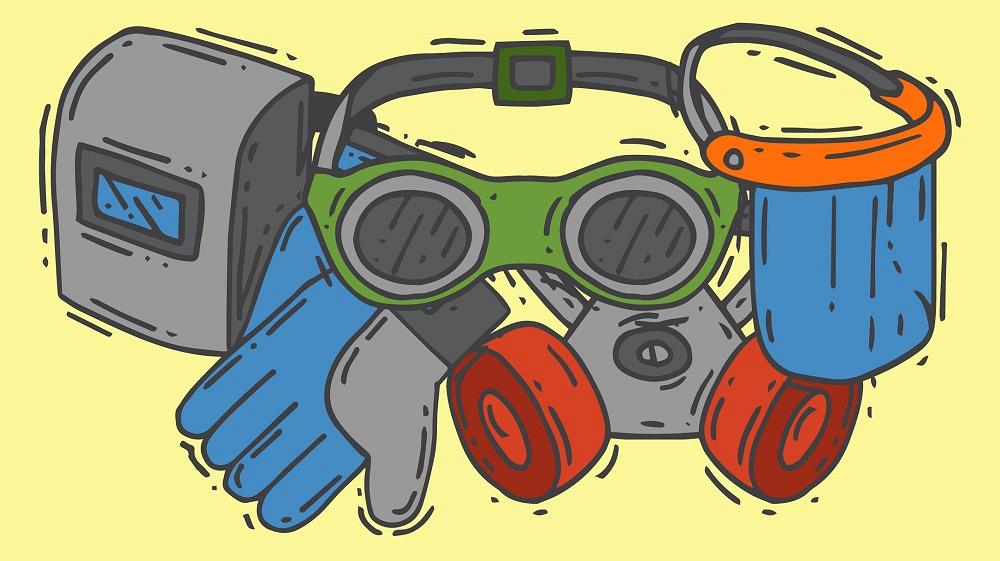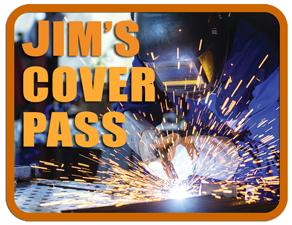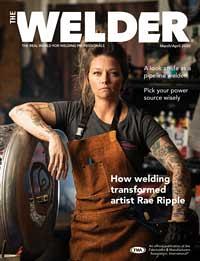Senior Company Trainer
- FMA
- The Fabricator
- FABTECH
- Canadian Metalworking
Categories
- Additive Manufacturing
- Aluminum Welding
- Arc Welding
- Assembly and Joining
- Automation and Robotics
- Bending and Forming
- Consumables
- Cutting and Weld Prep
- Electric Vehicles
- En Español
- Finishing
- Hydroforming
- Laser Cutting
- Laser Welding
- Machining
- Manufacturing Software
- Materials Handling
- Metals/Materials
- Oxyfuel Cutting
- Plasma Cutting
- Power Tools
- Punching and Other Holemaking
- Roll Forming
- Safety
- Sawing
- Shearing
- Shop Management
- Testing and Measuring
- Tube and Pipe Fabrication
- Tube and Pipe Production
- Waterjet Cutting
Industry Directory
Webcasts
Podcasts
FAB 40
Advertise
Subscribe
Account Login
Search
Fabrication shop safety topics
Tips to avoid cuts, burns, and eye injuries in welding and other metalworking environments
- By Jim Mosman, AWS, CWI/CWE
- Updated January 18, 2024
- April 1, 2020
- Article
- Arc Welding

Jim Mosman lays out the best topics that a metal fabrication shop should address at its monthly safety meeting. Getty Images
Q: I am in charge of our company’s safety talks. Which welding safety topics should I cover?
A: When the proper safety measures and training are in place, welding and cutting are safe occupations. When these measures are unknown or ignored, you can find yourself in some very hazardous, even deadly situations.
In this industry, the most common avoidable accidents are burns, cuts, and eye injuries. The American National Standard (ANSI) Z49.1 Safety in Welding, Cutting, and Allied Processes is the industry standard for safety, and every company that welds or cuts should have a copy of this document on hand. It is available from several sources as a free download if you search it on Google. You can take individual topics outlined in this standard and discuss them during your safety meetings.
Following these guidelines, I prefer to discuss how welding safety can easily be divided into three general areas: personal, equipment, and environmental.
Personal
Personal safety covers all of the personal protective equipment (PPE). When reviewing PPE, start with the head and work down. Proper PPE required for welding includes a welding cap; safety glasses; welding hood with proper shade lens; clear face mask; cotton, wool, or leather welding jacket; leather welding gloves designed for the process you will use; heavy cotton or leather work pants or chaps; and steel-toed leather boots. You can provide more in-depth training for each PPE item. Topics such as ergonomics, lifting procedures, and general health practices should also be included in the personal safety category.
Equipment
Equipment safety includes all matters regarding electrical or engine-driven welding power sources. Topics include performing proper safety checks on the equipment’s electrical and mechanical performance and guarding and the various shop equipment such as forklifts, overhead cranes, and robotic cells. Review a copy of the owner’s/operator’s manual for each piece of equipment on a regular cycle. Implementing proper preventive maintenance schedules and inspections will help ensure you have safe equipment.
Environmental
Instilling a sense of awareness in employees is the first step to establishing a safe work environment. Encouraging awareness of moving equipment and the actions of other workers is key. Make sure welding fume extraction equipment is installed and used. If necessary, workers may need to have fume protection as part of their PPE. Provide training and documentation on the proper procedures for confined space, electrical lockout/tagout, and first aid treatment. Also, explain why regular housekeeping and clean workspaces are important to the safety of the shop environment. Creating possible scenarios and discussing the proper action plan for each is a great training method.
Regularly scheduled safety meetings covering these various topics, using current and relevant information, should be a standard practice for any business. Spending a few minutes each week to discuss the safe practices of the company may prevent that one severe or fatal injury that nobody wants to happen.
About the Author

Jim Mosman, AWS, CWI/CWE
Lincoln Electric Education Division
About the Publication
subscribe now

The Welder, formerly known as Practical Welding Today, is a showcase of the real people who make the products we use and work with every day. This magazine has served the welding community in North America well for more than 20 years.
start your free subscription- Stay connected from anywhere

Easily access valuable industry resources now with full access to the digital edition of The Fabricator.

Easily access valuable industry resources now with full access to the digital edition of The Welder.

Easily access valuable industry resources now with full access to the digital edition of The Tube and Pipe Journal.
- Podcasting
- Podcast:
- The Fabricator Podcast
- Published:
- 04/16/2024
- Running Time:
- 63:29
In this episode of The Fabricator Podcast, Caleb Chamberlain, co-founder and CEO of OSH Cut, discusses his company’s...
- Trending Articles
Sheffield Forgemasters makes global leap in welding technology

Welding student from Utah to represent the U.S. at WorldSkills 2024

Lincoln Electric announces executive appointments

Lincoln Electric acquires RedViking

Engine-driven welding machines include integrated air compressors

- Industry Events
16th Annual Safety Conference
- April 30 - May 1, 2024
- Elgin,
Pipe and Tube Conference
- May 21 - 22, 2024
- Omaha, NE
World-Class Roll Forming Workshop
- June 5 - 6, 2024
- Louisville, KY
Advanced Laser Application Workshop
- June 25 - 27, 2024
- Novi, MI



























